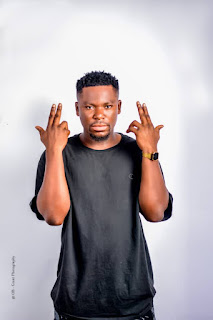THE GUR LANGUAGES OF NORTHERN GHANA
(At the Tamale-Gurugu fire festival)
The Gurs migrated
from several places. They are found within the Northern parts of Ghana, Togo,
Burkina Faso and the Ivory Coast. In Burkina Faso, they form the majority of
the people. The Mossi language is the most widely spoken Gur language in Burkina
Faso.
They speak different
but related languages. Their languages extend as far as into all the
neighbouring countries bordering Ghana. Most of their languages are not well known
and called small languages because
they are spoken in very small towns with very few populations including Kamara,
Vagla, Safalba, Templima, Birifor, Lobi, Nankani, Deg, Ntrubo, Chala, Hanga etc.
Further studies about this group of people will be dealt with in subsequent
topics. We shall be taking the
tribes under this ethnic group and study their histories.
The Gur could be
further divided into three main ethnic groups: Mole-Dagbon, Gurma and the
Gurunsi (Grushi). The Mole-Dagbon languages are spoken in mainland Dagbon and
they have a common ancestor Naa-Gbewa. The Mole-Dagbon languages are very
similar to each other and the languages under them are Dagbanli, Nanumli,
Mampruli, Kusaal, Dagaare and Mossi. Mossi is the primary Mole-Dagbon language
spoken in the Burkina Faso.
Other dialects broke
off from the major Mole-Dagbon languages and we will still include them under
the Mole-Dagbon family. They are Hanga from Dagbanli, Kamara and Safalba from
Mampruli, Birifor, Lobi and Nandom from Dagaare.
The next group is the
Gurma languages that look like the Mole-Dagbon languages except they may have a
different ancestry. That is to say their history or their ancestor is not the
same as the Mole-Dagbon languages. Some are within the northern regions of
Ghana whereas the Ntrubo, Kotokoli (Temba) and Mo are within the southern
regions. So we can separate them as Northern-Gurma, Western Gurma and
Southern-Gurma. Northern Gurma would be Vagla, Templima, Sissaala and Mo.
Southern Gurma would be Kotokoli, Basari, Ntrubo, Chala, Kabyle, Loso etc.
Kokomba is very much related to Basari which is a southern Gurma language.
Kokomba has also influenced Bimoba a lot. Bimoba is an Eastern-Gurma language
but then, Kokomba could be viewed as a partially Southern Gurma language and
partially Eastern-Gurma language.
Bimoba may be quite
an interesting language as it has extensive Mole-Dagbon borrowings especially
from Mampruli. The language is originally nothing like Mampruli but constant
borrowings has made it look like Mampruli, Kusaal and even Dagbanli so we may
say Bimoba is partially Gurma and partially Mole-Dagbon.
The last group would
be the Gurunsi or Grushi languages. Gurunsi simply means those who speak Gurune.
Gurune is the language of the Frafras and the term Gurunsi currently
encompasses the languages spoken within the Gurunsi territory. Kasem is a
language isolate that is to say it is nothing like any language spoken in Ghana
but then the Frafras in a bid to bridge the gap between the Kasina and them;
intermarried with the Kasina and with time, they developed a new language
called Nankani which is a blend of Kasem and Gurune thus to some extent,
Nankani ensures that Kasem is included as a Gurunsi language. And the Sissaala
and Builsas have borrowings from Kasem which links them all up. So then, the
mainland Gurunsi languages are Gurune, Nankani, Nabit, Talni, Kasem and Buli.
So the Gur language
group would be: Mole-Dagbon, Gurma (Southern, Western and Northern) and Gurunsi
(Grushi). They include the Dagaaba (a.k.a Dagaati), Dagomba, Mamprusi, Nanumba,
Templima, Kusasi, Kokomba, Lobi, Sissaala, Builsa, Kasina, Frafra, Mossi, Kamara
(Larabanga), Haŋa, Safalba, Vagla, Bimoba, Birifor, Ntrubo (Delo), Kotokoli, Mo
and others. And below is the pronominal and numerical system of some selected
Gur languages for comparison of languages.
|
Dagbanli |
Mampruli |
Birifor |
Dagaare |
Bimoba |
Kusaal |
|
N/Mani |
N/Ma |
N/Asin |
N/Ma |
N/Mɛ |
M/Mam |
|
A/Nyini |
I/I |
Fu/fu |
Fu/fu |
A/fini |
Fu / ’f |
|
O/O |
O/O |
O/O |
O/O |
O/wuo |
O/O |
|
Ti/Ti |
Ti/Ti |
Si/tĩi |
Ti/Atii |
Ti/Tim |
Ti/Tinam |
|
Yi/yi |
Yi/yi |
Yi/Yin |
Yɛ/Yaa |
Yi/Yim |
Yi/Yinam |
|
Bɛ/Bɛ |
Bɛ/Bɛ |
Ba/Abal |
Bɛ/Bal |
Ba/Ba |
Ba/Bama |
|
Dagbani |
Dagaare |
Kusaal |
Kamara |
Mampruli |
Safalba |
Bimoba |
|
Ndaam |
Bonyin |
Yinne |
Yinni |
Yinni |
Kpanleri |
Yen |
|
Ayi |
Ayi |
Ayi |
Ayi |
Ayi |
Ayi |
Ŋaanle |
|
Ata |
Ata |
Ata’ |
Ata |
Ata |
Ata |
Ŋanta |
|
Anai |
Ana |
Anaasi |
Anaasi |
Anaasi |
Anaasi |
Ŋanna |
|
Anu |
Anu |
Anu |
Anu |
Anu |
Anuu |
Ŋaanu |
|
Ayuɔbu |
Ayuab |
Ayɔɔbɔ |
Ayobu |
Ayobu |
Ayɔbe |
Ŋanluob |
|
Ayopɔin |
Ayopɔin |
Ayɔ’pɔi |
Ayopoi |
Ayopoi |
Ayopoi |
Ŋanluɔle |
|
Anii |
Anii |
Anii |
Anii |
Anii |
Anii |
Ŋannii |
|
Awei |
Awai |
Awai |
Awai |
Awe |
Awãi |
Ŋanyia |
|
Pia |
Pei |
Piiga |
Pia |
Pia |
Pie |
Piik |




Tsɔlɔ Owula Huniah, please ofainɛ. Ebe like if you dey speak Konkomba you dey Unnerstan Dagbanli, Mampruli and Nanun. In fact if memory serves in fact the mandatory female hairstyle and language is Likpakpam as the Konkomba call their languagein the palace at Yendi (Chiare) and Bimbilla. The BɛKpakpam are the autochthones and Land Chiefs ( tɛŋdana or utindaan) of the Dagbamba. It is said the BɛKpakpam are the mother of the Dagbamba. I believe Konkomba/ Bassari should be referenced alongside the MoleDagbanli languages. TsɛFio ojɛmra lo?
ReplyDelete